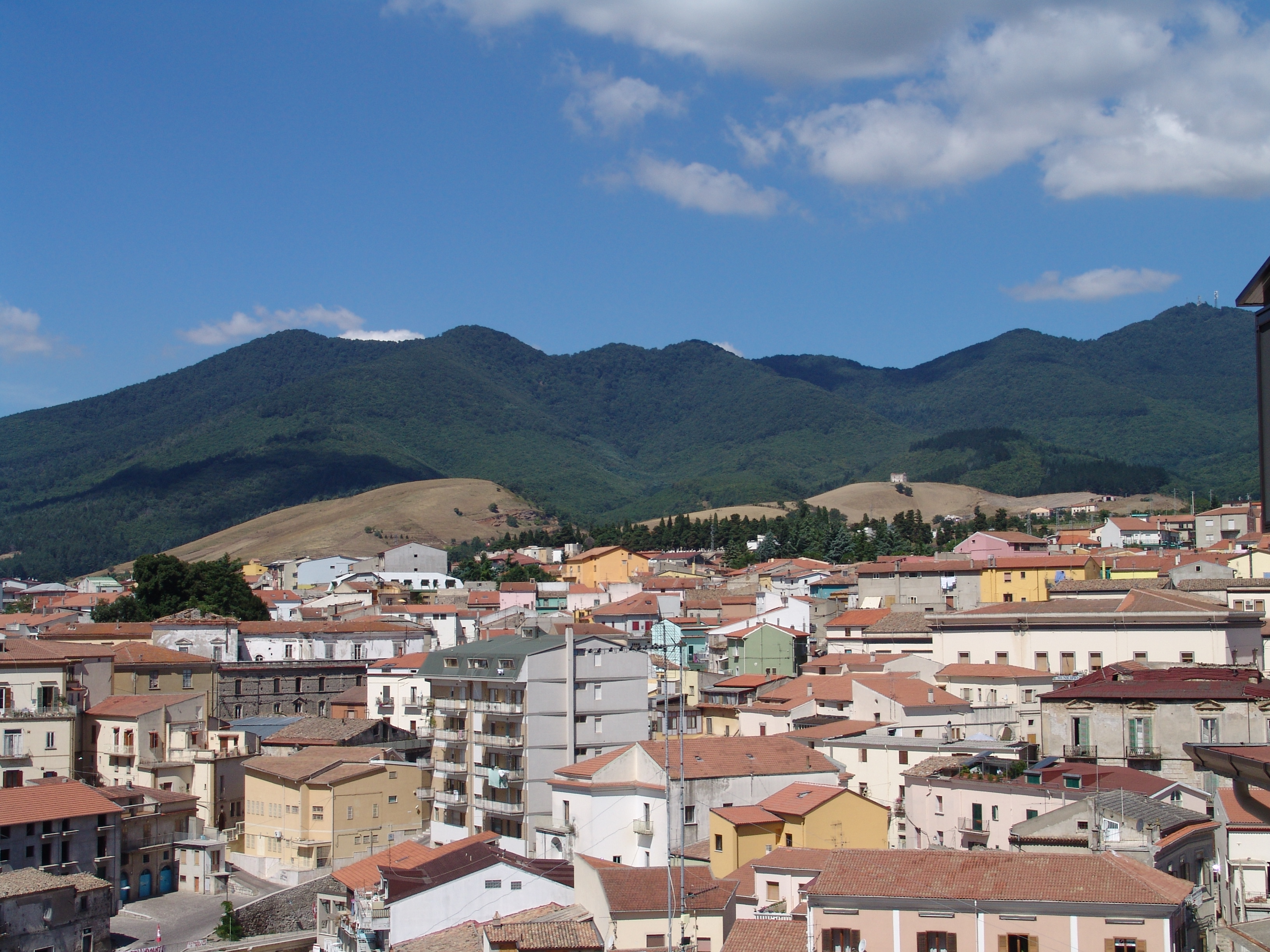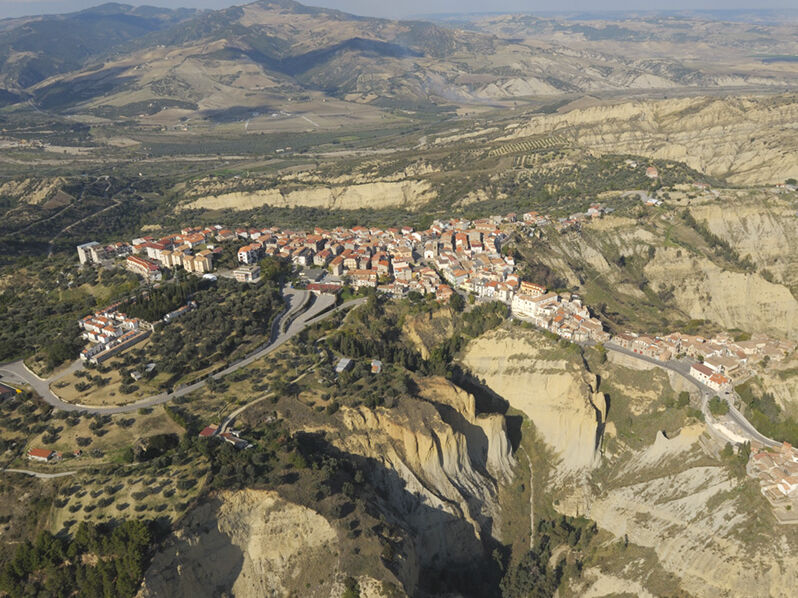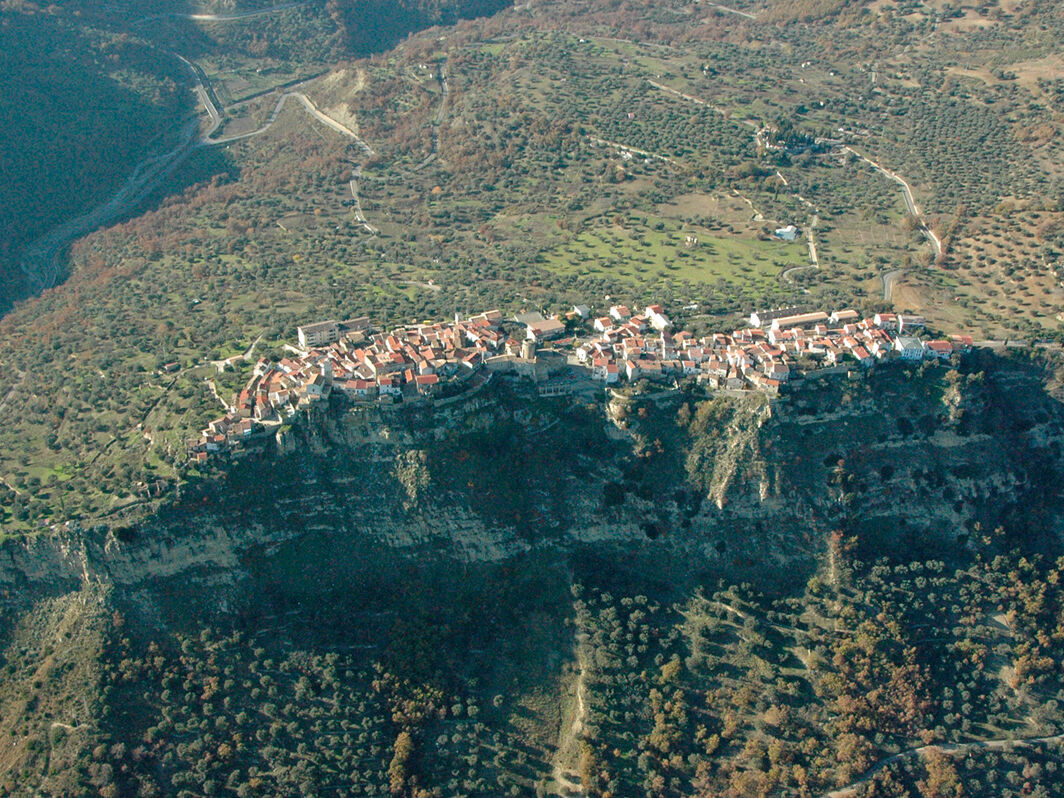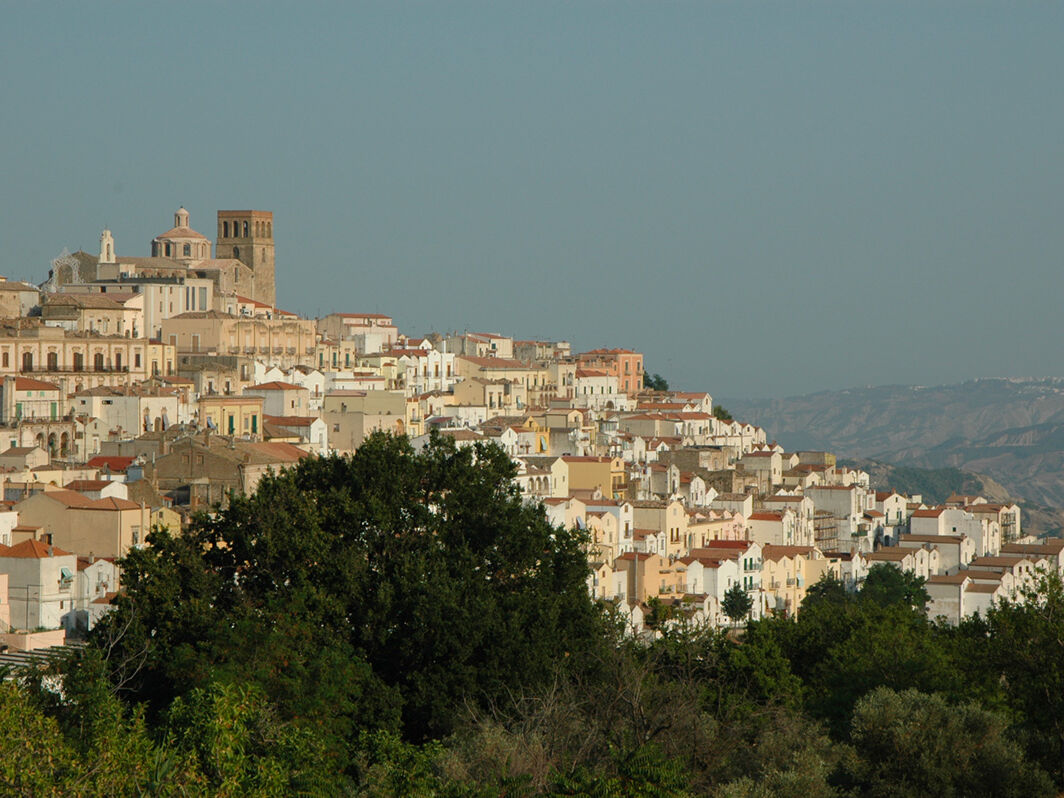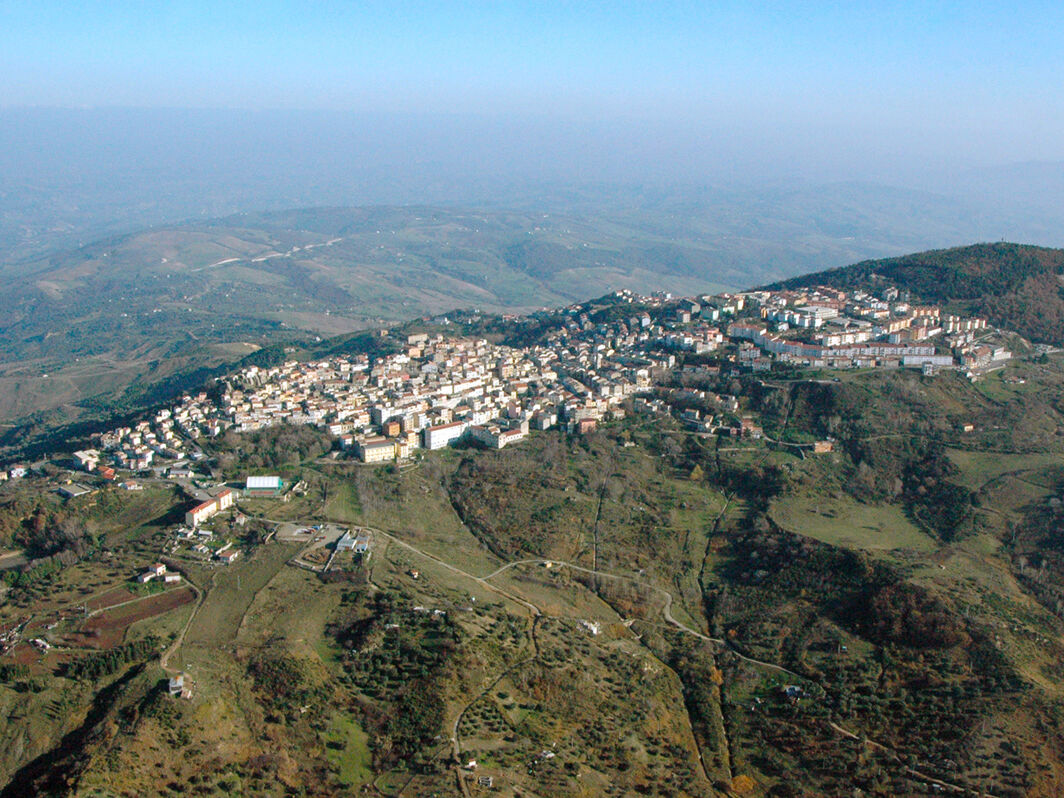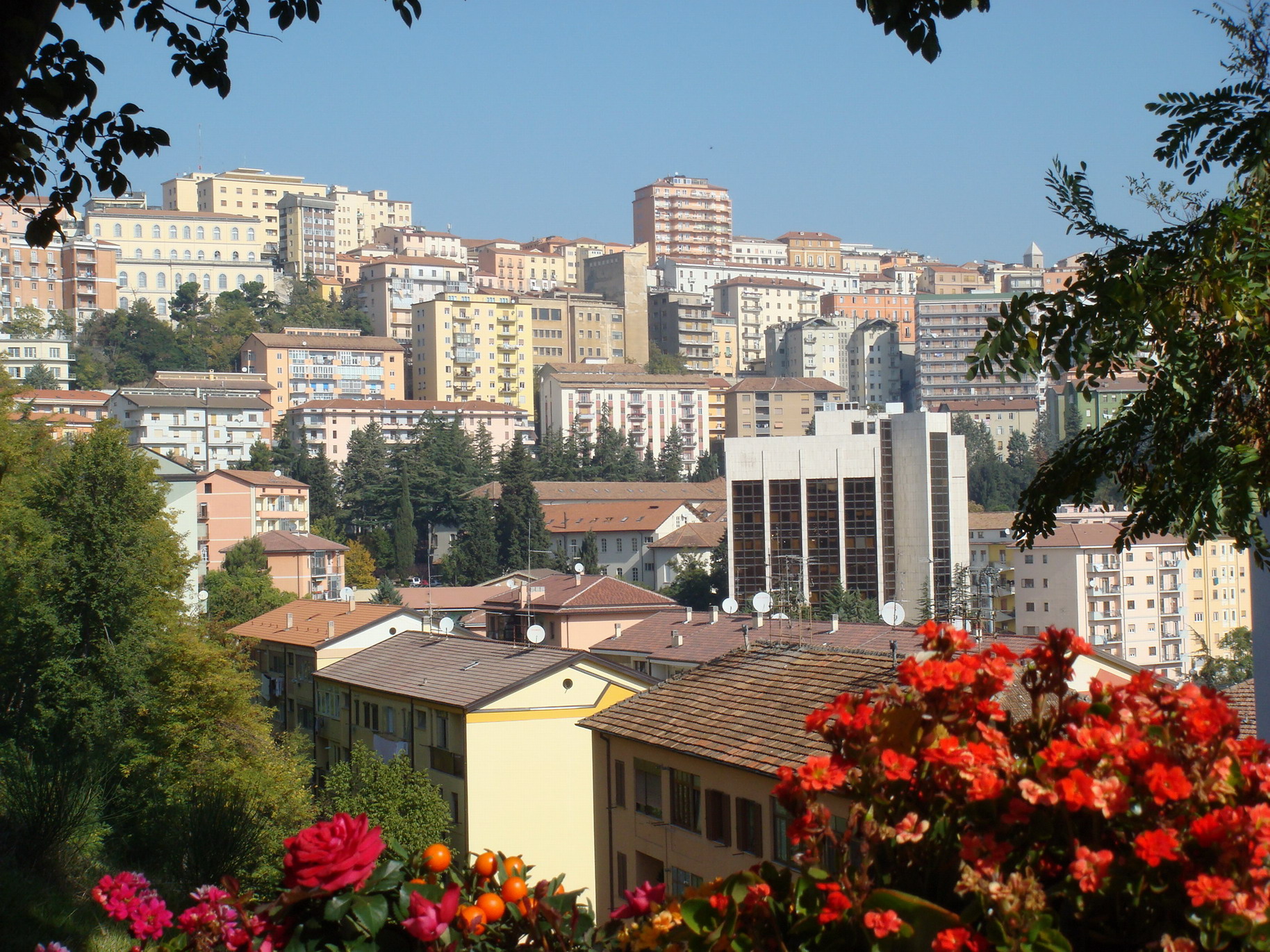Potenza is the capital of Basilicata. Nestled within the Apennine Mountains, the city overlooks the Basento River valley.
The city was founded in Roman times however most of the town itself was destroyed by an earthquake in 1857. On top of this the remaining structures suffered significant damage in World War II. As a result, Potenza has lost many of its ancient and medieval buildings but it is still a vibrant city definitely worth visiting.
The historic centre of Potenza is located in the upper part of the city and the square of Mario Pagano provides a perfect base for exploring the town. Via Pretoria runs east to west across the city and is packed with bars, shops and restaurants, as well as cultural, architectural and historical buildings including the Palazzo del Governo, the recently restored Francesco Stabile theatre, and the church of San Francesco d’Assisi which was founded in 1274. The church houses the De Grasis sepulchre and a 13th century Madonna in the Byzantine style that is worth visiting. The Romanesque church of San Michele Arcangelo, dating back to the 11th century, has many beautiful artworks including over 500 ancient frescos, one of which depicts St. Michele slaying the dragon. Also worth visiting is the Torre Guevara, the last remnant of an old castle which now hosts art exhibitions.
At an altitude of 819 metres, it is the highest regional capital in Italy.
In order to really get to know Potenza, Italy’s highest regional capital (819 m), you must get to grips with its long and often tortured history.
Over the centuries, wars, fires and devastating earthquakes (in 1273, 1694, 1857 and 1980) have altered its architectural appearance to what you see today: a modern city embracing a mediaeval town,perched on a hill. The area was first settled in Neolithic times, at Serra di Vaglio, north-east of the town. In around the 4th century B.C., the inhabitants moved to the present site. In the 3rd century A.D. it was a Roman prefecture with the name Potentia, mentioned by Strabo and Pliny as being one of Lucania’s oldest free independent cities. It was the seat of a bishop from the 5th century onwards and was ruled by the Lombards until 1066. In 1111, Gerardo La Porta from Piacenza was appointed bishop and subsequently became the city’s patron saint. Today the cathedral is still dedicated to him. A county under the Normans, Swabians, Angevins, Aragonese, and ruled, by the Guevara family, for a long time. In 1604 it fell into the hands of Count Enrico Loffredo and, in 1694, it reappeared in the Annals of the Kingdom of the Two Sicilies. In 1799, pro-republican movements and a wave of sanfedismo (pro-royalists) resulted in numerous clashes. The yearning for freedom continued throughout the struggles leading to Unification. In fact, in 1860, Potenza was the first city in the ‘Mezzogiorno’ (South of Italy) to rise up against Bourbon rule.
After the Second World War, many people moved away from the countryside into the cities, resulting in expansion north of the city (the Santa Maria district and, more recently, Macchia Romana) and the lower Basento valley.
The last devastating earthquake struck Potenza on 23 November, 1980, measuring IX on the Mercalli scale. As it has throughout its history, the city rose again from the ruins and reacted by conducting a major overhaul of the streets and buildings in the old city centre and a reconstruction programme implementing hi-tech antiseismic building techniques in the rest of the city.
Potenza has been the regional capital for over two hundred years and boasts a thousand-year old history.
Ancient alleys, enchanting squares and historic stairways surround the old town centre.
The heart of the city is via Pretoria, the ancient decumanus, which is a gathering place for local people as well as the main street of the city. It is home to important cultural institutions, such as the ancient “Francesco Stabile” Theatre, in Piazza Francesco Mario Pagano, the Museo Archeologico Nazionale (National Archaeological Museum) and the Auditorium of the “Carlo Gesualdo di Venosa” music conservatory.
Potenza is also home to important cultural hubs. The following are particularly noteworthy: the National Library, the Museo Archeologico Nazionale (National Archaeological Museum) “Dinu Adamesteanu” and the Civic Gallery of Palazzo Loffredo, and the Museo Archeologico Provinciale (Provincial Archaeological Museum) with the adjacent Pinacoteca.
Among the main historical and architectural sights of the capital, it is particularly worth mentioning the many churches, which embed an extraordinary artistic heritage, starting from San Gerardo Cathedral. Originally dedicated to the Assumption of the Blessed Virgin Mary, between the 12th and 13th centuries it was named after Saint Gerard. The Cathedral is located on the highest point of the historic centre. Its construction dates back to the 13th century, but it was rebuilt in the 18th century according to a design by architect Magri, a pupil of Vanvitelli. The interior houses a Roman sarcophagus containing the remains of Saint Gerard, while below the main altar, a crypt with a polychrome mosaic of the 3rd-4th century has been found. The bronze doors of the main façade, made by Calabrian sculptor Giuseppe Niglia in 1968, are valuable.
20 Basilicas, Sights and Enchantment Furthermore, on the main city centre’s street, via Pretoria, you can visit the Chiesa di San Michele, that was founded in 1178 and is a treasure trove of works of art: a 16th-century fresco depicting the Virgin enthroned with the child and an Annunciation, a masterpiece by Pietrafesa; the Chiesa di San Francesco, dating back to the 13th century, which houses treasured 14th-century frescoes, and another depicting the Martyrdom of St. Sebastian, made in the 1500s by Todisco; the Chiesa della Trinità, dating back to the 11th century, and rebuilt after the earthquake of 1857. Near the historic centre, the Chiesa di Santa Maria del Sepolcro, one of the most ancient churches in the city, dating back to the 12th-13th century, is really worth a visit. The interior boasts a 17th-century wooden coffered ceiling and several works of art dating back to the 15th century.
Lucanian archeology and the forms of art connected to it find their place in numerous museums and sites scattered between the center and the outskirts of the city.
They preserve the ancient historical and artistic vestiges of Basilicata through the exhibition of important discoveries and in-depth studies relating to Lucanian archeology in general. They are the National Archaeological Museum of Basilicata dedicated to “Dinu Adamestenu”, founder of Lucanian archeology, based in the historic Palazzo Loffredo, in the historic center of Potenza, and the Provincial Archaeological Museum, located in the Santa Maria district, one of the oldest in the Capital.
Worth a visit also the so-called Villa Romana di Malvaccaro which stands in the heart of the city and preserves valuable signs and symbols of a distant but unforgettable time.


